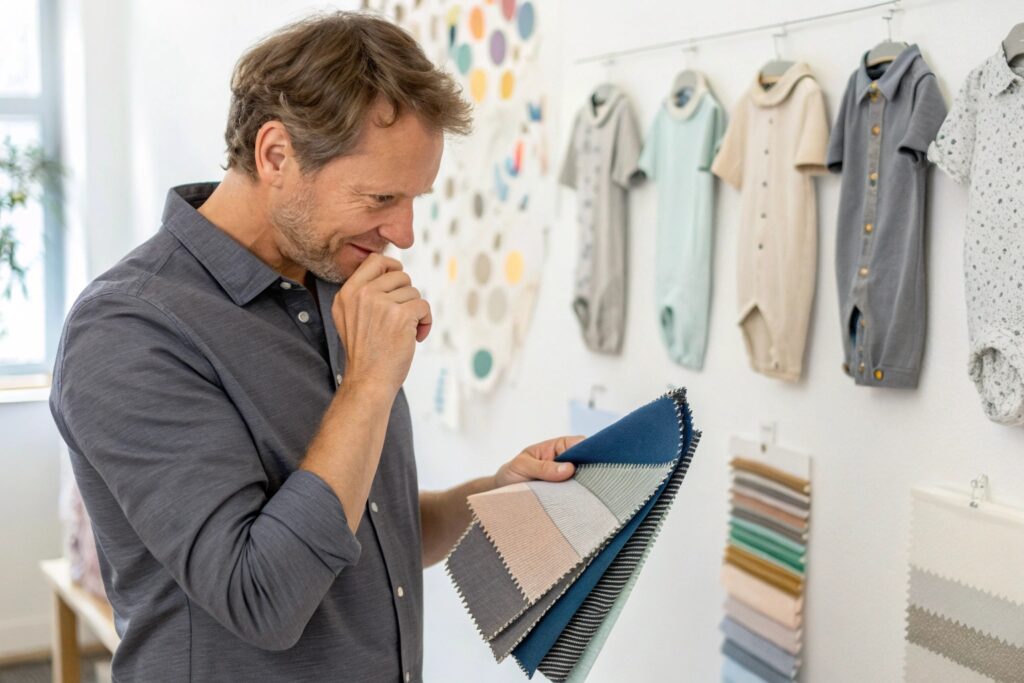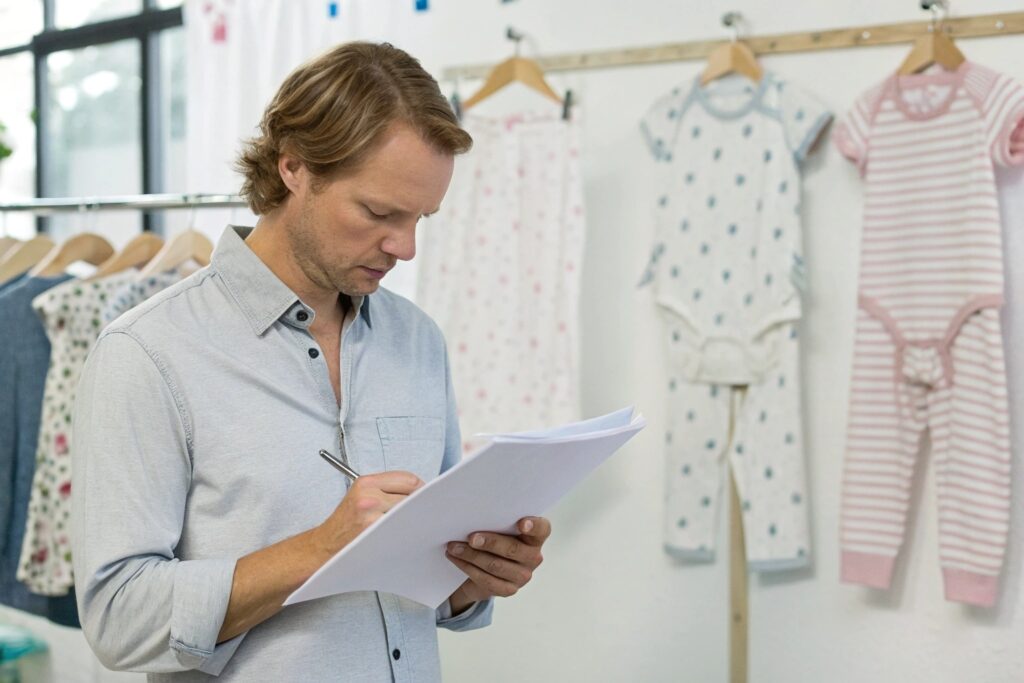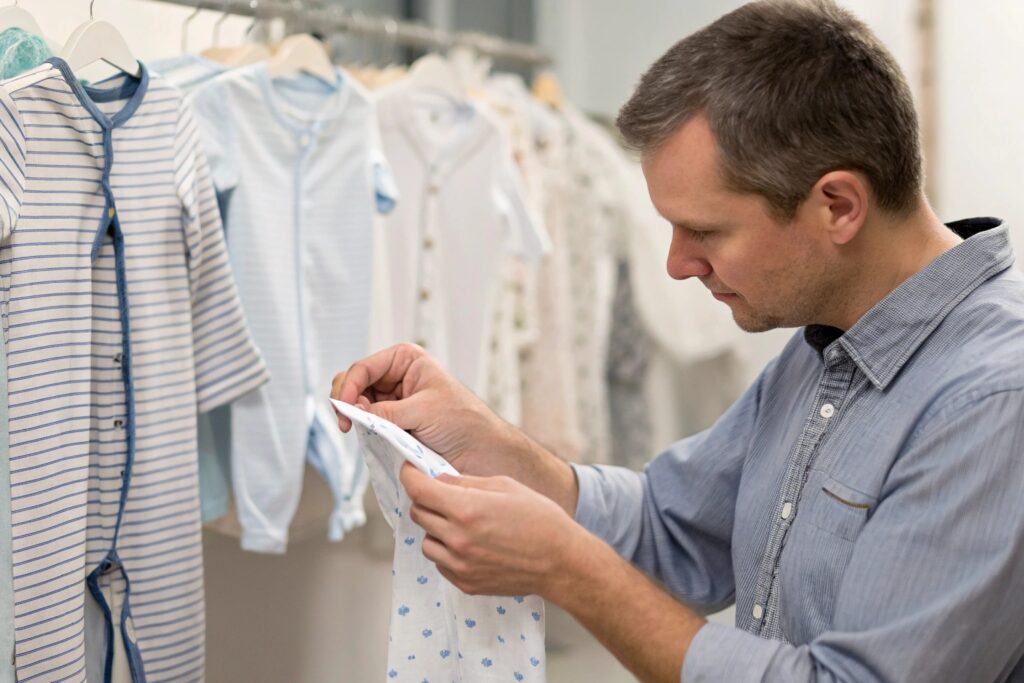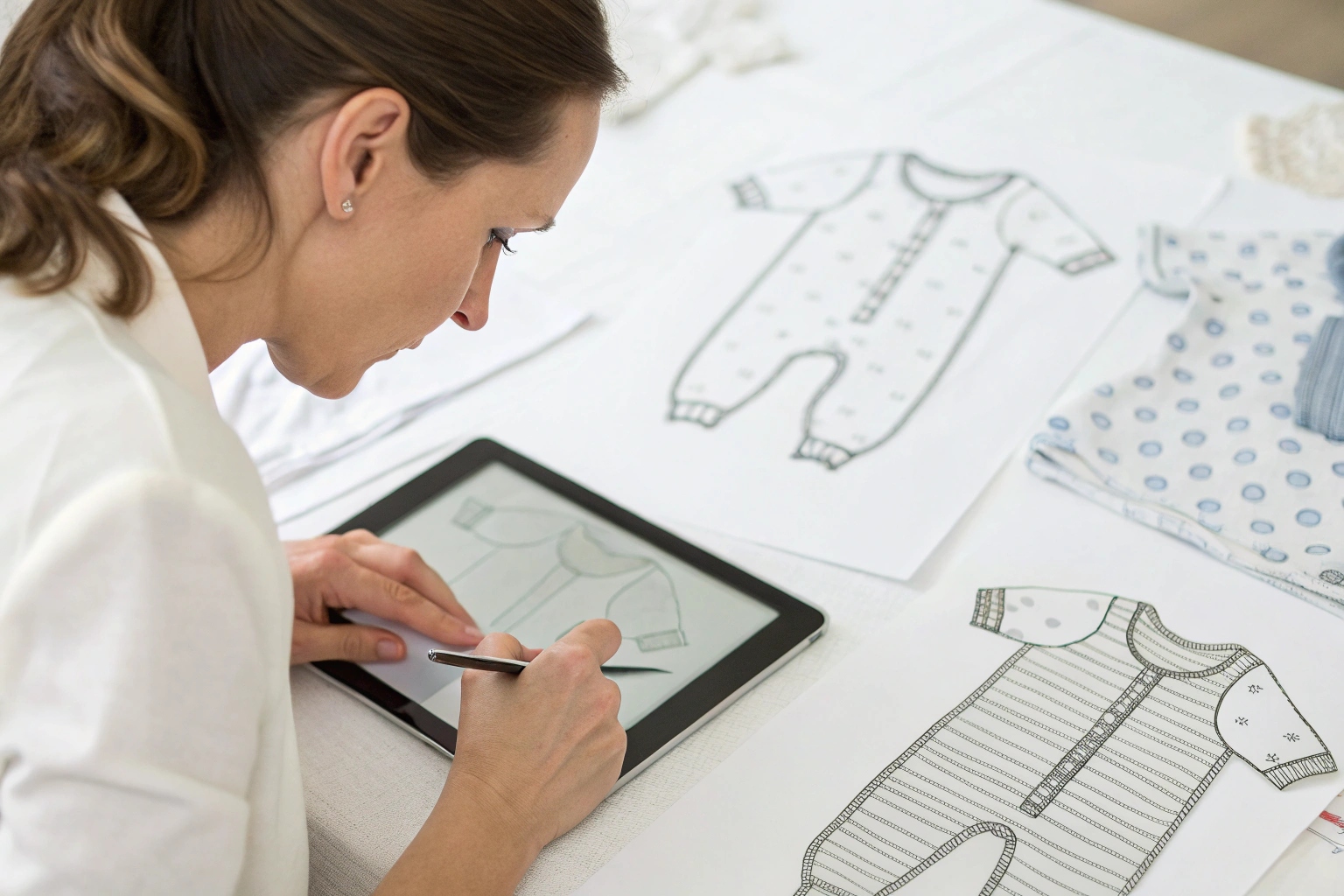You have a vision for your kidswear brand—but how do you turn that idea into real products on shelves or online?
To make custom kidswear from scratch, you’ll need to design styles, choose fabrics, create tech packs, work with a manufacturer, and approve samples before production.
I’ve helped clients turn sketches into seasonal collections. In this guide, I’ll walk you through the full custom development process—from fabric to final product.
What Steps Are Involved in Custom Kidswear Production?
Bringing a new kidswear design to life takes more than just an idea. It takes a system—from concept to bulk production.
The custom kidswear production process includes design development, sourcing, pattern making, sampling, approval, and full production.

What’s the typical timeline and workflow from design to delivery in a custom order?
Here’s a simplified overview of the key stages:
| Stage | What Happens | Estimated Time |
|---|---|---|
| Design Development | Sketching, mood board, silhouette planning | 3–5 days |
| Fabric & Trim Sourcing | Picking materials, colors, accessories | 4–7 days |
| Tech Pack Creation | Specs, artwork, measurements, stitching notes | 2–3 days |
| Pattern Making | 2D pattern drafted by in-house or freelance | 3–5 days |
| Sampling | First physical prototype created | 7–10 days |
| Fit & Quality Review | Revisions after size trial or feedback | 3–5 days |
| Production | Final bulk run after approval | 20–30 days |
Some stages can overlap—for example, sourcing and patterning can run side-by-side. At Fumao, we speed up timelines by assigning each client a dedicated sample coordinator.
Why is it risky to skip or rush early stages like sampling or tech pack creation?
Skipping these steps leads to:
- Wrong measurements or proportions
- Misunderstood design details
- Defective trims or inconsistent quality
- Delays due to rework or customer complaints
One brand I worked with skipped the fit sample, went straight to bulk—and had to remake 2,000 rompers because the armholes were too tight. Since then, they never skip sampling.
How to Choose the Right Fabric and Design for Your Brand?
The look and feel of your collection depends on the fabric. But it also affects price, comfort, washability, and compliance.
Choose fabric and design based on your brand values, end-user needs, seasonality, and desired price point. Always sample first.

What factors should you consider when selecting fabric for kidswear?
Fabric isn’t just about feel—it impacts safety, longevity, and brand appeal. Here’s what to consider:
| Factor | Why It Matters |
|---|---|
| Fabric Type | Cotton for breathability, bamboo for softness |
| Certification | OEKO-TEX® or GOTS for safety |
| Shrinkage / Washability | Affects long-term fit |
| GSM (Weight) | Impacts structure and comfort |
| Color & Dyeing Method | Impacts durability and look |
For babywear, organic cotton and interlock knits are popular. For older kids, jersey, fleece, or woven cotton blends work well.
At Fumao, we help clients match fabric with function. For example, a summer onesie line used lightweight muslin to keep babies cool—and sales increased during heat waves.
How do design choices reflect your brand identity and target customer?
Your brand might focus on:
- Minimalist aesthetic – solid colors, modern shapes
- Whimsical playfulness – hand-drawn prints, bright colors
- Gender-neutral basics – muted tones, simple cuts
- Eco values – earthy palettes, natural textures
Design defines your place in the market. We work with brands that serve both high-end boutiques and practical everyday shoppers. Your design language needs to match your mission—and your price point.
Where to Find Kidswear Manufacturers Offering Full Customization?
Finding a factory that supports full customization is key—not all manufacturers do it. Many only offer stock styles.
Look for manufacturers that offer cut-and-sew from scratch, pattern development, fabric sourcing, labeling, and flexible MOQ.

What types of manufacturers support full custom development for kidswear brands?
Here are the main types:
| Manufacturer Type | What They Offer | Customization Level |
|---|---|---|
| CMT (Cut, Make, Trim) | You provide fabric and specs | Medium |
| OEM (Original Equipment Mfg) | Full design + production support | High |
| ODM (Original Design Mfg) | You select from their base designs | Low–Medium |
Fumao Clothing is an OEM manufacturer, meaning we start from your idea, source everything, and create samples based on your specs. That’s the best choice if you want unique designs.
How do you vet a custom manufacturer before starting?
Here’s what to look for:
- Clear product catalog and factory photos
- Sampling service with revisions
- Ability to source custom fabrics
- Minimum order quantities under 1,000 pcs
- DDP shipping option to simplify logistics
Ask for samples, certifications, and a test run. Many of our new clients begin with just one style—then expand after they see our process.
Tips for Creating Tech Packs and Approving Samples?
A tech pack is your design’s blueprint. Without it, factories guess. With it, you control the outcome.
Use a detailed tech pack to communicate your design, then review samples carefully for size, stitching, and label accuracy.

What should a kidswear tech pack include to avoid misunderstandings?
Here’s what we recommend in every tech pack:
| Tech Pack Element | What It Does |
|---|---|
| Flat Sketch | Shows shape and seams clearly |
| Measurement Chart | Lists garment dimensions by size |
| Color & Fabric Reference | Fabric swatch or Pantone color |
| Construction Notes | Describes stitching, hem, neck, etc. |
| Label & Trim Placement | Tag locations, logo specs, etc. |
| Packaging Details | Hangtag style, bag type, folding method |
We help clients build tech packs in Google Sheets or Illustrator. Even a simple PowerPoint version is better than nothing when you're just starting.
What should you check when approving the final pre-production sample?
Use this checklist before signing off:
- Fit test on real children or mannequins
- Color match to approved swatches
- Label and tag spelling + placement
- Stitching quality and inside seam finishing
- Logo or print alignment
- Packaging accuracy (especially for DTC brands)
I always tell clients: approve with your eyes, hands, and ruler. Don’t rush. If something feels off in the sample, it’ll be worse in bulk.
Conclusion
Getting custom kidswear made from scratch takes planning—but the results are worth it. With the right fabric, factory, and workflow, your idea can become a standout product that parents love and remember.










